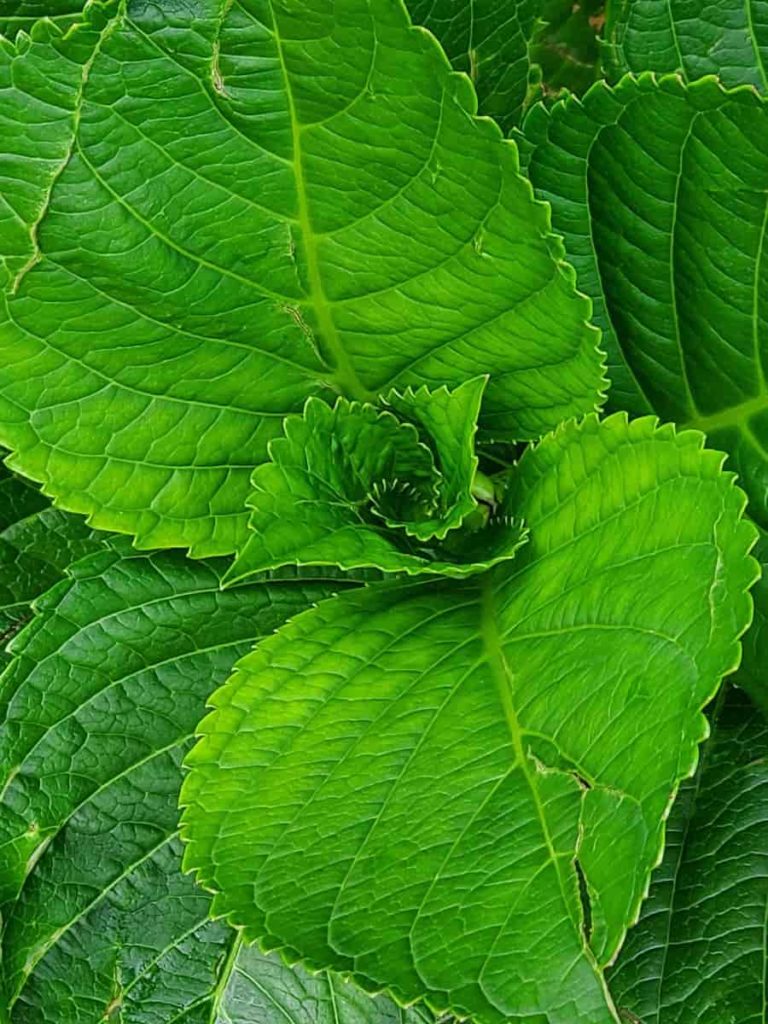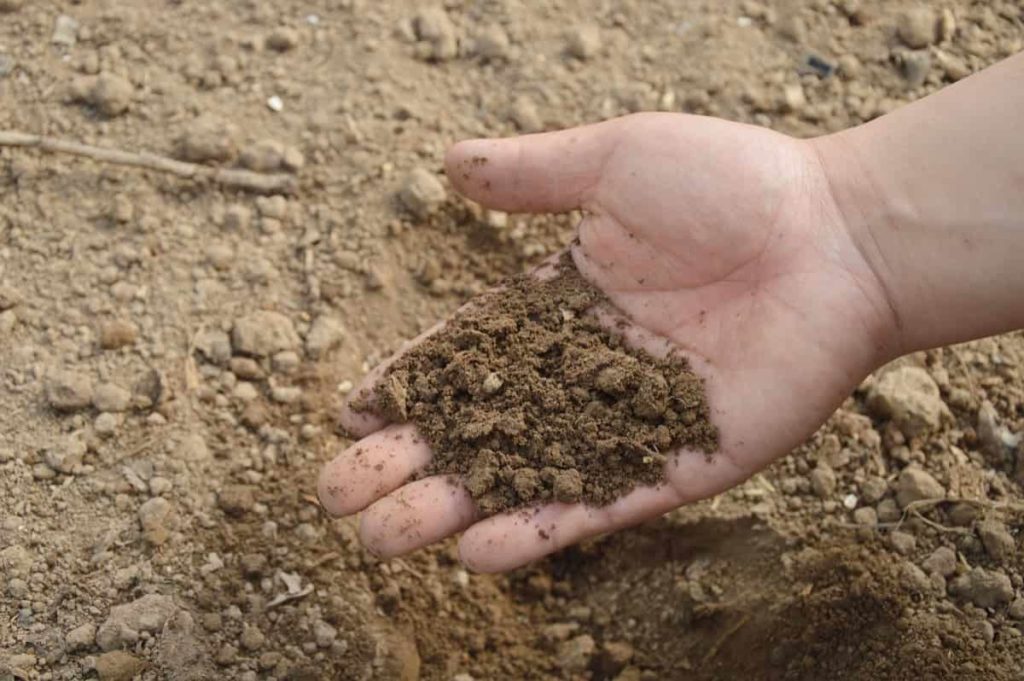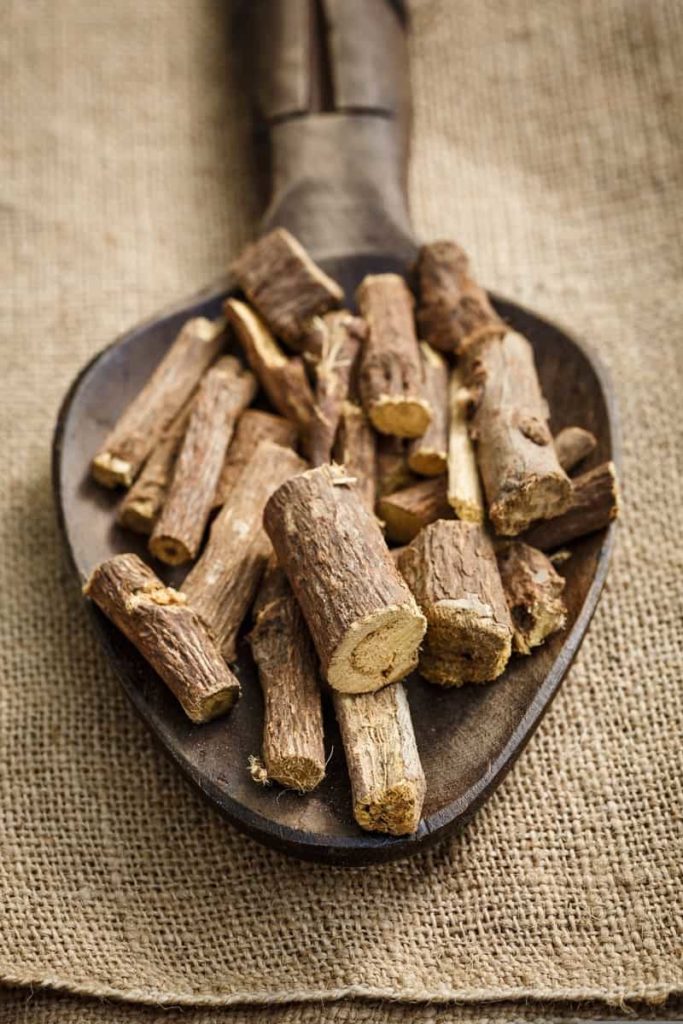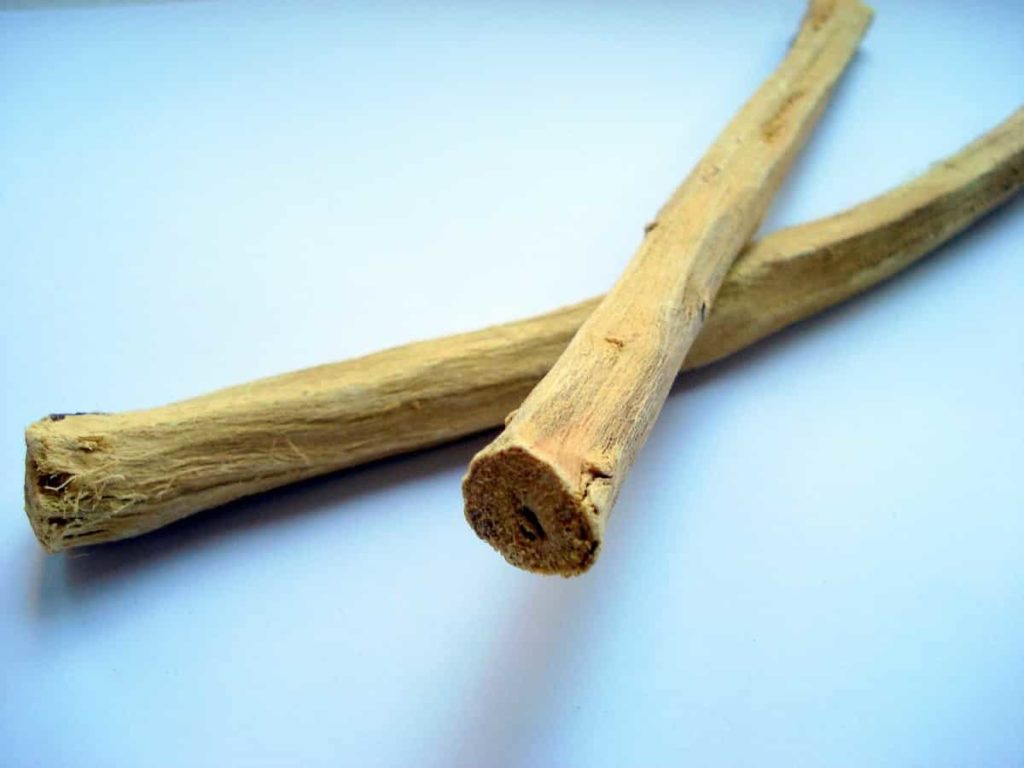Gardeners have enthusiastically embraced the Licorice plant for its raised, felted leaves and its slow-spreading growth habit. The Licorice plant makes a strong impact with its unique texture, shape, and color and makes an excellent ground cover or trailing plant for containers. It is native to the warm Mediterranean and parts of southwest Asia and has been used as a medicinal herb for centuries. Licorice, also spelled Liquorice, is a perennial herb of the pea family, and its roots are used as a flavoring, sweetener, and folk medicine.
How to grow Licorice plants for beginners
Soil and light requirements for growing Licorice plants
A full sun location is best for growing Licorice plants. However, they will also do well in partial shade since they are not grown for their flowers. Plants will be slightly less vigorous in partial shade, but in areas with excessive heat, the leaves may remain more attractive when they get some relief from the hot sun. A Licorice plant will grow in most soil, but it can root rot in soils that retain water, so a well-draining site or container is best. It is not specific about soil pH.
You can grow Licorice from seeds, root cuttings, or by division, and they are happy in pots larger than 20cm or directly in the garden. Licorice likes deep, slightly sandy soil and needs time getting the mix right. In a pot, mix 1 part compost with 1 part sand and 1 part soil. If you are planting Licorice in the ground, you may need to fill the soil with additional compost and sand.
Licorice can grow in well-drained soil but prefers deep fertile, moist soil for good root production. It will tolerate alkaline conditions and oceanic climates and can grow in full sun or light shade. Licorice is a slow grower that doesn’t grow much in the first two years – or after it’s transplanted. It has a symbiotic relationship with certain soil bacteria that form nodules on roots and fix atmospheric nitrogen. Some of this nitrogen is used by the Licorice and other nearby plants.
In case you missed it: How to Propagate a Pothos: A Beginners Guide to Planting and Care
Propagation methods in Licorice plants
Propagating Licorice is easy. Cuttings, division, or seeds can propagate it. Licorice is similar in flavor to Anise. Both plants are slightly sweet and slightly bitter. The Licorice plant is an interesting species in high demand for its unique foliage, and growers cultivate this plant throughout the year.
The Licorice plant is a mounding or trailing shrub that, when grown annually, has stems about 20 inches tall. They are covered in lovely, silvery, heart-shaped leaves, also available in cream or yellow. It produces cream-colored flower heads if allowed to flower late in the growing season.
Growing Licorice from seed
Soak the Licorice seeds in lukewarm water for at least 24 hours, and then sow the seeds in the seed starting mix, which you can make using these recipes. Sow seeds 1/2 inch deep. Then, cover the seeds with soil and keep them moist until they germinate. Germination occurs in two weeks. The optimum germination range is around 20°C. Licorice plants produce abundant seeds, germinating freely when exposed to the right conditions.
Although cultivated seeds rarely germinate in the correct form, most germinate reliably and can produce plants with different colors and leaf shapes. Start Licorice plant seeds indoors about six to eight weeks before the last spring frost. Sow them on the soil’s surface and do not cover them with soil. Please place them in a bright place where the temperature stays around 21°C. Moisten the soil frequently, so it never dries out completely, but avoid making it soggy. Look for the first sprouts in about two weeks.
Growing plants from seed aren’t difficult, but it can be hit and miss. The best plan is to sow extra seeds just in case they don’t germinate. Sow seeds in potting compost in mid-spring or early fall. You will need to transplant these plants when they are large enough to handle in 2- to 3-inch pots. Please keep them in a warm spot and give them time to grow in their pots before planting. Ideally, the plants should be about 9 to 12 months old before planting outside.
Growing Licorice from Division
Divide the plant in the spring or fall season. Each division should have about one growth bud. If dividing the plant in autumn (autumn), the divisions must be replanted immediately, or you can store them in a clamp for spring planting. Division propagation works best for mature, well-established Licorice plants because younger specimens lack adequate root structure. The best seasons for dividing Licorice plants are fall and spring because the cool, moist weather allows them to establish a new root system while protecting them from heat, drought, and frost stress.
In case you missed it: How to Start Exotic Flower Farming in India: Production and Growing Guide for Beginners
Dig up a three- to five-year-old Licorice plant using a pointed spade. Cut the root ball into equal parts, each containing a portion of roots and stems. Transplant the division into containers or a bed with the same soil, light, and moisture conditions. Water the divisions well and watch for new growth in four to six weeks.
Transplant and Aftercare – No matter the propagation method, immature Licorice plants should be grown in light shade during their first summer to prevent stress as they develop a mature root system. They do best when transplanted in fall, especially if grown in warm climates where long, dry summers are common. Once transplanted into a sunny bed with well-draining soil, Licorice plants require little maintenance. However, smaller plants benefit from regular watering during summer to help them get established.
Growing Licorice from cuttings
You can propagate a new plant by taking cuttings from the bush. Keep the cuttings in water until they root. Once they are rooted, please place them in pots filled with potting mix. Water the cuttings regularly until they start to grow new leaves.
Fertilizer requirement for growing Licorice plants
Licorice plants are not heavy feeders. If the soil is poor, add some compost or other organic matter. It will add some trace nutrients and also improve drainage. You can apply a balanced fertilizer mid-season for an extra boost when growing as an annual. If your plants are perennials, they may need to be fertilized once or twice a year.
In case you missed it: What is Shifting Agriculture: A Guide to Characteristics, Process, and Types for Beginners
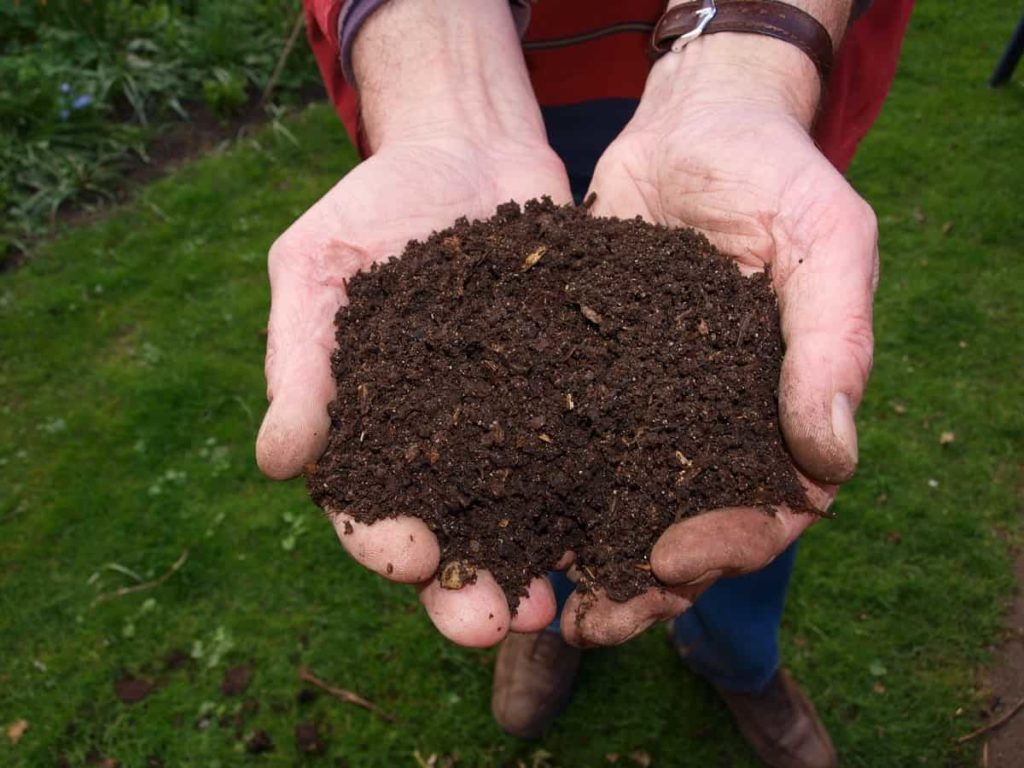
Varieties of Licorice plants
New varieties of Licorice plants are slowly being introduced to the market, and new varieties often crowd out older varieties. There are only subtle differences, as they all stem from the color of their leaves.
- Helichrysum petiolare: A very beautiful silver gray that complements other colors.
- Limelight: Not as fast-growing as species with chartreuse-colored leaves.
- White Licorice: It is a good choice for containers; these vigorous-growing plants have silvery foliage 10 inches tall with an 8- to 10-inch spread.
- Licorice Splash: This drought-tolerant variety has gray-green to yellow-green leaves. It needs part sun to full sun and has a bushy, compact growth habit. It is expected to reach 8 to 12 inches in length.
- Silver Mist: With its small, soft, silvery-white foliage, this plant can be used as a base annual in areas that receive full sun. It grows about 6 to 8 inches tall and spreads up to 2 feet. Its multi-branched stems rarely need pinching. If sown from seed, start your seeds indoors 3 months before the last spring frost in your area.
- Icicles: Narrow, needle-like, silvery leaves distinguish this Licorice plant. The small yellow flowers attract bees and butterflies. Use ‘Icles’ in full to partial sun. It is especially good for rock gardens. This mounding plant grows 1 to 2 feet tall and wide, so it is best used as a sprinkler (trailing plant).
- Lemon Licorice – Perfect for part shade in warm climates, this plant hugs the ground and spreads up to 2 feet. Tender, new leaves emerge from silver and chartreuse green. It grows well in urban areas with air pollution.
Licorice Growing Conditions
Licorice likes plenty of water and sun. Avoid air spots and frost pockets. Sandy soil is essential. If your soil is too heavy, prepare it before planting. Dig a hole at least two spades wide and deep (a spade is the length of a spade blade). Remove any stones, mix the soil with plenty of compost and fill it again.
Licorice is a legume, and like other fruits, it fixes nitrogen in its roots, so it rarely needs additional fertilizer. However, it will appreciate occasional mulching to help reduce weeds, retain moisture, and provide additional nutrients. Slugs, caterpillars, powdery mildew, and spider mites can be a problem in this plant. Also, protect them from rabbits. Otherwise, Licorice is pretty trouble-free.
Licorice plants are companions that don’t have many problems with pests or fungal diseases. Yet, when the feet of these shrubs are constantly wet, root rot can occur over time. Please make sure you let their soil dry between drinks to avoid this problem. Likewise, the plants can get scorched if you grow your Licorice plants in hot direct sunlight and don’t provide enough water.
Growing Licorice in pots
You can grow Licorice in pots. Make sure the soil isn’t compacted and feed with a container-specific fertilizer now and then. Use a light-colored pot or container to keep the soil temperature level low if you live in a hot climate.
Licorice plant spacing
It is growing up to five feet tall, and the roots can spread much further than that, so it needs a lot of space—a plant between 18 and 36 inches tall.
Tips for planting Licorice
Although Licorice plants grow well in moist soil, they are susceptible to root rot if they experience wet conditions or waterlogging. It would help if you planted your shrubs using a good drainage substrate. The soil is well-draining; you can plant them in any growing medium with all soil pH values. If you’re growing your Licorice plants in poor soil, make sure you mix in some compost or other organic material when you first plant them.
Organic material will generally provide nutrients to your shrubs and improve drainage. Licorice plants usually thrive with little or no fertilizer at all. However, if your bushes look unhealthy and don’t grow anymore, compost will bring them back into shape in a short period. Perennial Licorice plants do best with a balanced fertilizer once or twice a year. A single application with the same product in mid-spring for annual plants will be more than enough.
Licorice plant care
The Licorice plant is a little picky when staying hydrated, so keep a good layer of mulch around the plant to retain moisture. And there’s no need to worry about fertilizer as long as your soil is good. Another great thing about the Licorice plant is that it is pest and disease free. As they get older, Licorice plants will begin to appear with some old, brown stems. If you want to keep shrubs in their prime, you can safely cut back the stems whenever you see them. This process will also promote new growth.
Likewise, pinching back smaller, healthier stems will help keep your plants looking younger and fuller. When finding a home for your Licorice plant, plant it in well-drained soil. The Licorice plant does not appreciate sitting in too much water. If this happens, your plant may begin to rot. Once your plant is established, it is drought tolerant, although it prefers regular watering. Since this plant is a perennial, it won’t bloom unless you live in a tropical climate and overwinter it.
If it blooms, the flowers are small and white. Be careful in tropical locations, as this plant can reestablish itself and become mildly invasive. Licorice plants are not very susceptible to disease. This plant can be a problem with spider mites, especially during dry periods. Spray the leaves frequently with water to help alleviate this problem.
Companion plants for Licorice
The best companions for Licorice
- Marigolds
- Marjoram
- Rosemary
- Lettuce
- Zinnia
In case you missed it: Top 14 Mini Tractors to Improve Farm Production in India
Don’t plant Licorice with
- Onion
- Leek
- Garlic
- Broccoli
- Cabbage
- Cauliflower
When and how to harvest Licorice
Licorice roots are ready for harvesting two years after planting. Prune the plant in the fall. Remove the horizontal roots with a sharp spade and repot the plant so it can grow again. Protect the main roots so that the plant is not damaged. When you harvest your wine root, dig out the brownish-yellow roots that are long and flexible with a yellow interior.
Harvest the thickest horizontal plant roots, but leave the deep tap roots and thin horizontal roots to grow. Plant roots can be harvested after the first or second year of growth. A better practice is probably to prune after three years by removing most of the larger roots and replanting each stem. Harvest in late summer. It takes three years for a Licorice plant to produce its first crop.
To harvest your Licorice plant, loosen the soil around the roots. Once you’ve loosened some of the dirt around the roots, you can pull up the plant. You should be able to get a few pieces of root from this process. After the first harvest, your Licorice plant should continue to produce more roots. You can cut it back in the spring, but you’ll have to wait a few months for it to grow back. If you do this, leave a few good-sized pieces of root to keep growing.
Frequently asked questions about growing Licorice plants (FAQ)
How long does Licorice take to grow?
Although the Liquorice is slow growing, it has the potential to grow quite large after four or five years – up to two meters (six feet) tall, with a spread of about one meter (three feet). If you are planting in a flower bed, leave enough space around the plants to dig the roots.
Where does Licorice grow best?
It is a tropical perennial plant and is hardy only in USDA zones 9-11. They are easily grown as annuals elsewhere. The Licorice plant also makes a good houseplant if you give it enough light.
Can you grow Licorice in pots?
Licorice has deep roots and is best grown in the ground. It usually does not grow well in containers unless they are large and deep. Licorice plants ask very little in the way of care. They require very little fertilizer, perhaps only at planting time. Well-drained soil is preferred for plant growth. They resent overwatering, so don’t place it in a too-shady or wet location. The Licorice plant is a moderately hardy shrub that will tolerate light frosts and long dry periods.
It prefers well-drained soil and good air movement. It makes a great hedge or centerpiece for your garden or can be grown in tubs and patio pots. Felt plants have a stunning, almost luminescent color that gives the plant a focal point in any perennial garden. It will grow to about 1.3 meters in height. It grows very well in part shade or full sun, and the soft cream flowers are perfect for drying and floral arrangements.
Is Licorice easy to grow?
Licorice plant care is not difficult—plants like alkaline, sandy, moist soil. Cold hardiness varies greatly from species to species. Licorice plants are slow to establish, but once they get started, they can be aggressive.
Can Licorice plants be rooted?
Roots can be harvested after the first or second year of plant growth. A better practice is probably to prune after three years by removing most of the larger roots and replanting each stem—harvest in late summer.
In case you missed it: A Guide to Understanding Agriculture/Farming Subsidy in India
How do you harvest Licorice roots?
Harvest the thickest horizontal roots, leaving the deep tap roots and thin horizontal roots to grow. Replant for winter in very cold areas or bring it under cover. Chewed fresh, the root tastes sweet and slightly salty. The sweetness is intense as you chew and release the juice.
What is the difference between Licorice and Anise?
Anise and Licorice taste and smell the same but differ in taste. Anise is spicy and slightly sweet. On the other hand, Licorice can be bitter, salty, and sour. They smell similar because they both contain anethole, an organic flavoring compound.
Can you cut back Licorice?
The Licorice plant handles pruning well, and it is a good idea to give trailing varieties a pinch early in their growth to encourage good branching. They don’t need pruning but can be pinched back if their stems get too tall and rarely need fertilizing. Some gardeners cut them back after bloom to keep the plants looking tidy.
Conclusion
Caring for Licorice plants is easy. It is a small shrub with beautiful, mauve, pea-shaped flowers and bright green divided leaves. Licorice plants are one of those popular decorative items that can add personality to any dull spot in your garden or home. Gardeners grow these shrubs for their attractive foliage and irresistibly low-demand nature. Like most tropical species, they can always thrive with lots of light, warm weather, and little water.
- Types of Pesticides Used in Agriculture: A Beginner’s Guide
- Economical Aquaculture: A Guide to Low-Budget Fish Farming
- 15 Common Planting Errors That Can Doom Your Fruit Trees
- How to Make Houseplants Bushy: Effective Tips and Ideas
- Innovative Strategies for Boosting Coconut Pollination and Yield
- Pollination Strategies for Maximum Pumpkin Yield
- The Complete Guide to Chicken Fattening: Strategies for Maximum Growth
- Natural Solutions for Tulip Problems: 100% Effective Remedies for Leaf and Bulb-Related Issues
- Revolutionizing Citrus Preservation: Towards a Healthier, Greener Future
- Natural Solutions for Peony Leaf and Flower Problems: 100% Effective Remedies
- Maximizing Profits with Avocado Contract Farming in India: A Comprehensive Guide
- Natural Solutions for Hydrangea Problems: 100% Effective Remedies for Leaf and Flowers
- The Ultimate Guide to Choosing the Perfect Foliage Friend: Bringing Life Indoors
- From Sunlight to Sustainability: 15 Ways to Use Solar Technology in Agriculture
- The Ultimate Guide to Dong Tao Chicken: Exploring from History to Raising
- The Eco-Friendly Makeover: How to Convert Your Unused Swimming Pool into a Fish Pond
- Mastering the Art of Delaware Chicken Farming: Essentials for Healthy Backyard Flocks
- 20 Best Homemade Fertilizers for Money Plant: DIY Recipes and Application Methods
- How to Craft a Comprehensive Free-Range Chicken Farming Business Plan
- Brighten Your Flock: Raising Easter Egger Chickens for Beauty and Bounty
- How to Optimize Your Poultry Egg Farm Business Plan with These Strategies
- Subsidy for Spirulina Cultivation: How Indian Government Schemes Encouraging Spirulina Farmers
- Ultimate Guide to Raising Dominique Chickens: Breeding, Feeding, Egg-Production, and Care
- Mastering the Art of Raising Jersey Giant Chickens: Care, Feeding, and More
- Ultimate Guide to Raising Legbar Chickens: Breeding, Farming Practices, Diet, Egg-Production
- How to Raise Welsummer Chickens: A Comprehensive Guide for Beginners
- How to Protect Indoor Plants in Winter: A Comprehensive Guide
- Ultimate Guide to Grow Bag Gardening: Tips, Tricks, and Planting Ideas for Urban Gardeners
- Guide to Lotus Cultivation: How to Propagate, Plant, Grow, Care, Cost, and Profit
- Agriculture Drone Subsidy Scheme: Government Kisan Subsidy, License, and How to Apply Online
- Ultimate Guide to Raising Araucana Chickens: Breed Profile, Farming Economics, Diet, and Care
- Bringing Hydroponics to Classroom: Importance, Benefits of Learning for School Students
- Ultimate Guide to Raising Polish Chickens: Breed Profile, Farming Economics, Diet, and Care
- Ultimate Guide to Raising Australorp Chickens: Profile, Farming Economics, Egg Production, Diet, and Care
- Silkie Chicken Farming: Raising Practices, Varieties, Egg Production, Diet, and Care
- Sussex Chicken Farming: Raising Practices, Varieties, Egg Production, Diet and Care
